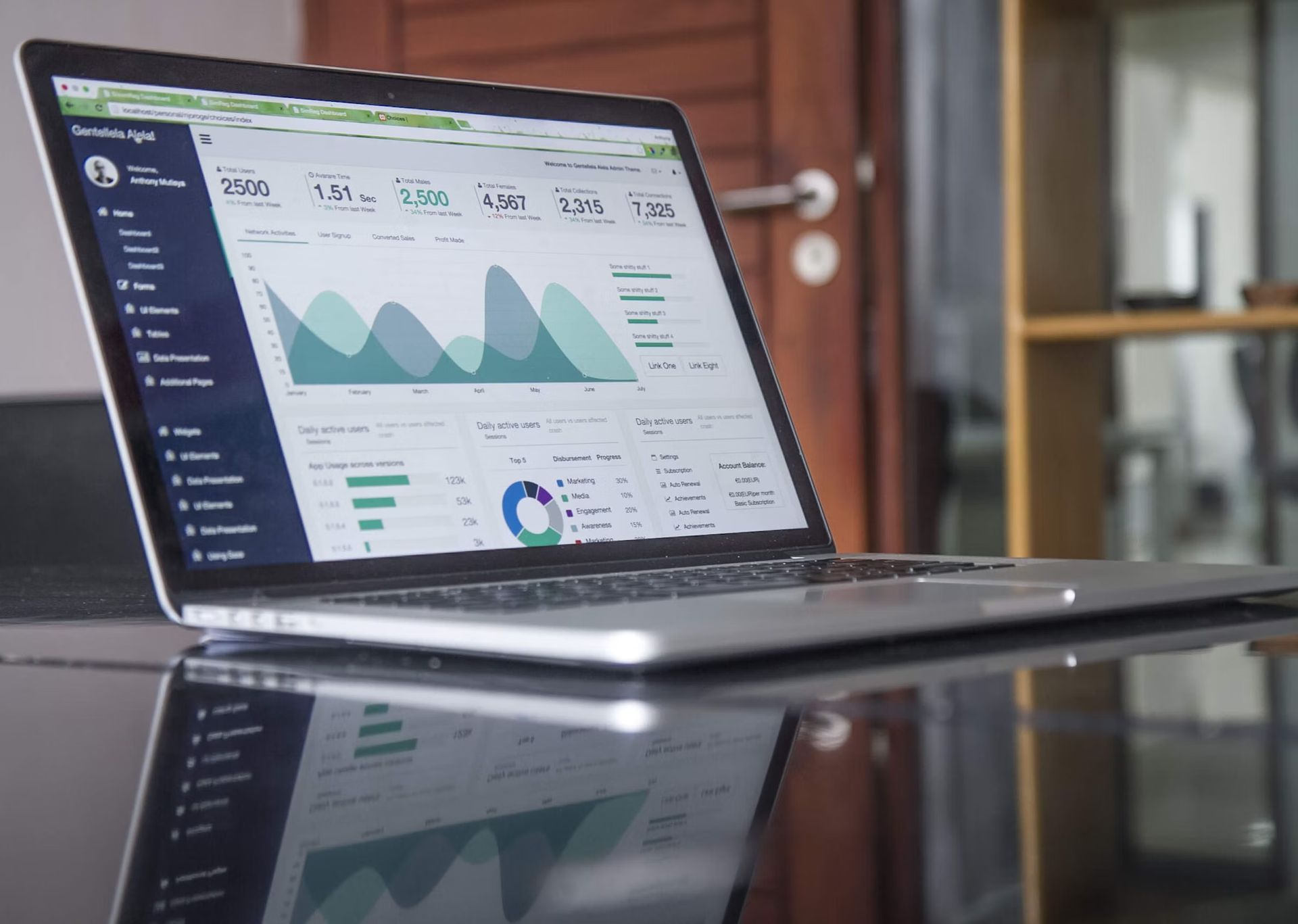A data management method called data as a service (DaaS) intends to use data as a corporate asset for increased business agility. It is a component of the “as a service” offers that had gained popularity since the internet’s growth in the 1990s when software as a service (SaaS) was first introduced.
Similar to other “as a service” business models, data as a service gives businesses a mechanism to manage the enormous volumes of data they produce every day and distribute that useful data throughout the organization for data-driven decision-making.
What is data as a service (DaaS)?
The key component of the data as a service strategy is the on-demand provisioning of data from various sources via APIs. It delivers curated datasets or streams of data to be consumed in a variety of formats, frequently unified through data virtualization, and is designed to make access to data simpler. Data virtualization, data services, self-service analytics, and data cataloging are just a few of the data management technologies that could be included in a DaaS design.

In essence, DaaS offers a mechanism for companies to access their enormous and complicated data sources in order to present consumers with the most crucial information. Any organization that wants to use data to create true value must embrace this data democratization. With a more data-centric approach to company operations and processes, there is a significant possibility to monetize an organization’s data and create a competitive edge.
Data as a service architecture
Business users can create local data domains or repositories using data architecture as a service without jeopardizing the consistency and reliability of enterprise data. Self-service has reached its zenith when business units virtually free themselves from enterprise IT. If implemented properly, data as a service decreases data bottlenecks, lightens the workload for enterprise data teams, and gives local domains the ability to meet their own data requirements. Additionally, it’s a crucial component of the growing distributed architecture for data ownership and management known as the “data mesh.”
AI and big data are the driving forces behind Industry 4.0
Data as a service business model
Best practices in data collecting, monitoring, interpretation, and distribution are incorporated into data as a service (DaaS) business models in order to take advantage of the potential for development, investment, risk mitigation, alignment, and profit. Models based on DaaS operate in an ecosystem.
This indicates that data as a service (DaaS) models succeed in commercial settings where client needs, data accessibility, and the particular challenge at hand are all compatible, especially when the customer finds the data relevant in business settings.
It is worse to have no insight than to gather and disseminate incorrect data or to draw conclusions from data that the customer(s) cannot use.

Benefits of data as a service
The effects of data as a service (DaaS) could be enormous. Data as a service may be successfully exploited to the advantage of the entire organization and its clients, not just in terms of income. Major advantages that DaaS may provide businesses over time include the following:
- Data monetizing
- Efficiency
- Innovation opportunities
- Fast decision-making
- Data-driven trends
- Lower risks
- Data monetizing
Today, most businesses do not have a significant problem with not having enough data. The largest problem in the market today is operationalizing and organizing that data. Few CEOs have completely realized the value of their data, despite the fact that many have made significant investments in data monetization programs. DaaS might be a crucial tool for achieving that objective. Increasing the availability of data can.
Efficiency
Spending time and money on the wrong decisions may be considerably reduced by utilizing all of a company’s various data sources, discovering insights, and sharing those insights with various sectors of the business to act smarter. DaaS implies making more data-driven judgments and less gut-based ones, using fewer resources on misguided, pointless endeavors. DaaS can also help businesses create individualized client experiences by utilizing predictive analytics to comprehend consumer behaviors and patterns, improve customer service, and cultivate customer loyalty.
BI dashboards: Error-free operations with organized data
Innovation opportunities
Consider DaaS as a gateway to expansion. When data is at the core of a company, expansion occurs swiftly. This is so that greater innovation can be achieved with lower risk using data-informed techniques. Ideas based on such data have a better chance of winning support from other parts of the organization and ultimately succeeding when put into reality when reliable data is made available to the various departments and teams that require it. With access to data that supports new efforts and encourages growth, ideas can take off more quickly.

Fast decision-making
For many firms, data as a service (DaaS) offers a fantastic chance to consider data as a crucial corporate asset for better strategic decision-making and efficient data management. For a complete picture of the business, it can include both internal and external data sources, including customer, partner, and open data sources.
DaaS can also be used to deliver data quickly for analytics that are specifically designed for it, with end-to-end APIs catering to particular business use cases. With the aid of an easy-to-use self-service directory, DaaS can support self-service data access by making it simpler for business users to access data. By doing this, you may spend less time looking for data and more time analyzing it and taking action on it.
Data-driven trends
Businesses today face a significant problem in overcoming data silos and providing teams with the data they require. Businesses now have the option to supply integrated data from an expanding range of data sources thanks to DaaS, which promotes a culture of data-driven decision-making and democratizes the use of data in routine tasks.
Through reusable datasets for widespread data consumption, DaaS also assists businesses in managing the rising tide of data and expanding data complexity in the modern day. These reusable data assets can encourage intra- and inter-enterprise exchange, creating a unified perspective of the company’s operations. DaaS can assist firms in integrating data into their business activities by facilitating access to essential data resources.

Lower risks
Data as a service can assist in removing some of the subjective judgments that frequently endanger businesses from decision-making. Guesswork-based businesses frequently fail. Businesses that use a DaaS provider are given the information they need to make the best decisions and succeed. Through the use of reusable data services, businesses can access, integrate, convert, and deliver data using data virtualization and other technologies, improving query performance and assuring data security and governance. DaaS reduces the hazards brought on by contradictory, incomplete, or low-quality data views in this way.
Trends in data as a service (DaaS)
Below you can find some important trends driving the future of data as a service solutions:
Data visualization
Several new businesses are moving upstream to concentrate on data visualization, data-driven insights, and decision tools in order to directly serve business analysts and decision-makers. Businesses are creating data-driven insights aimed at the end user as a result of the widespread adoption of sensors, such as in golf clubs that instruct you on how to improve your swing.
Top 5 data science trends for 2023
Automation
Since everything is now connected to everything else, formerly invisible processes may now be monitored and improved as insights move upstream. Analog and human processes will be replaced by everything that can be automated. Every part of a company’s business model will change as a result of the adoption of data-driven organization design since everything that can be digitized will be.

Benchmarks
When you want to assess how well your company is performing in comparison to its competitors, data as a service is a helpful tool. Organizations can use DaaS to gain access to global data and produce benchmarking reports that may contain information on leadership effectiveness, turnover, and financial success.
Challenges of implementing data as a service into your business
Data as a service has the potential to be beneficial for many business use cases, but there are a few issues that businesses should be aware of before investing.
When using DaaS, enterprises may first run into difficulty with data complexity. DaaS deals with all of the data throughout the entire organization, not just with one area or problem to solve. Hence the project roadmap for such a project must be extensive and may take some time to complete properly. This is especially true for big businesses that are drowning in unstructured data.
In the same vein, data as a service might be difficult because it frequently necessitates a corporate plan and might call for guidance from the C-Suite. Making an organization more data-driven, dismantling data silos, and democratizing data access are frequently parts of a bigger effort.
Last but not least, security must be a key priority for any DaaS deployment due to the complexity of today’s data security threats. This entails making sure that new DaaS components are subject to the proper data governance, security, privacy, and other data quality rules. The documentation and location of all data assets should be excellent.
Data as a service examples
For businesses that prioritize serving their clients and customers, DaaS provides practical and affordable solutions. For instance, to distribute parts catalogs into the customer channel, Fidelitone, a supply-chain and logistics management firm, used ARI’s DataStream DaaS solution.

Best data as a service companies (DaaS companies)
The data as a service providers you will find below are the leading initiatives in the sector.
Data as a service: AWS
Without the need for them to develop data processing or analytics capabilities, the data as a service (DaaS) platform enables data providers (on the AWS Data Exchange) to build and sell data goods and services to their subscribers right out of the box. The subscribers can rapidly reap the benefits of their investments in data subscriptions by utilizing the data and services that are easily available in DaaS.
The data as a service platform offers the following features out-of-the-box according to AWS:
- KPI Dashboard
- Geospatial Analysis
- Customer Segmentation – Interactive, based on user-defined attributes.
- Clustering – Algorithmic.
- Data delivery via batch transfer
Data suppliers can completely tailor their service on the DaaS platform by asking us to include any extra features or functionalities that their users might need.
Data as a service: Gartner
Consulting and system integration (C&SI) and managed services are how Gartner defines the market for data and analytics (D&A) services. These services handle data management for both operational and analytical purposes, as well as data analysis to power business operations and enhance business outcomes through better decision-making. The following are the primary abilities of vendor solutions in the market for D&A services:
- Designing an operating model and D&A strategy
- Handling of data
- Business analytics and intelligence (ABI)
- Data science and artificial intelligence
- D&A Management Program
See its products in detail.

Data as a service: McKinsey
“Data and analytics represent a 20% growth opportunity,” McKinsey says.
But for organizations to really benefit from data, they must adopt a data-driven approach, including it in all processes, interactions, and decisions.
These businesses make extensive use of their data. They introduce goods that are seamlessly integrated and offer highly individualized experiences. They grow more resilient, scale new businesses, and penetrate new markets. Additionally, they create teams that are capable of continually converting insights into growth.
We assist clients in recognizing the benefits of rapid and extensive data transformation. We build the systems, procedures, and cultures that transform data and analytics into fresh sources of competitive advantage in collaboration with QuantumBlack, AI by McKinsey and McKinsey Technology.
Data as a service: Azure
With Azure Data Factory, a fully managed serverless data integration solution, you can combine all of your data. Utilize more than 90 included, maintenance-free connectors to visually integrate data sources without paying extra. Create ETL and ELT processes quickly and easily without writing any code in an intuitive environment. In order to gain business insights, submit integrated data to Azure Synapse Analytics.
Learn more here.
Data as a product vs data as a service (DaaP vs DaaS)
You might be wondering what the big deal is with DaaS if your firm already has a ton of datasets from the data team and markets itself as a data-driven company.
Let’s first clarify the differences between the DaaP and DaaS models before moving on.
The data team’s job in the “Data as a Product” paradigm is to provide the data that the business needs for any purpose, including decision-making, developing personalized products, or spotting fraud. That is all there is to it.
Tiktok data privacy settlement payout starts
The DaaP model treats the company’s data as a product, and data flow is one-way from the data team to the company.
Big businesses have long used this model, which is not at all new. However, they have been pursuing the trade-off and have grown wiser with time. Data as a service, a new model that is consistent with DaaP, has begun to take shape.

Under the data as a service paradigm, the data team works with stakeholder groups to solve specific problems using data.
Data team members are in charge of delivering insight rather than rows and columns and have more functional knowledge. They may also help certain stakeholder groups (such as a product analyst and a marketing analyst).
Instead of providing tools for others to solve their own problems, the data team’s focus in a DaaS model is on providing answers to inquiries. One is a partnership focused on services, while the other is an SLA focused on products.
Conclusion
Through the data service, users can access data. Since the data service is the sole source of updates, it is simpler to track changes to the data, which can enhance the quality of the data. DaaS accelerates access to the required data by making it adaptable but easy to access. Users can take action right away without having to fully comprehend where the data is stored or how it is indexed. The most significant advantage of data as a service is agility, which enables customers of the service to reduce time to market.
DaaS enables businesses to compromise between capital expenditures and operating costs. Data as a service enables businesses to create services without spending money on the employees and infrastructure needed to handle their data. Additionally, DaaS lowers the capacity of source systems, lowering license, MIPS, and hardware expenses. DaaS aids businesses in reducing maintenance expenses.
A core process is often not disrupted by data as a service models; rather, a workflow is enhanced. The ability to quickly add value to the organization is aided by a thorough understanding of industry requirements and customer experience journeys. Data services firms frequently employ a default design strategy to integrate into the end-day users and solve a clearly stated customer problem because few consumers request more dashboards.
Don’t forget to check out our articles explaining other “as a service” solutions:





